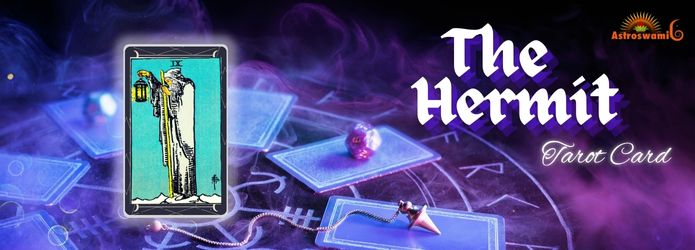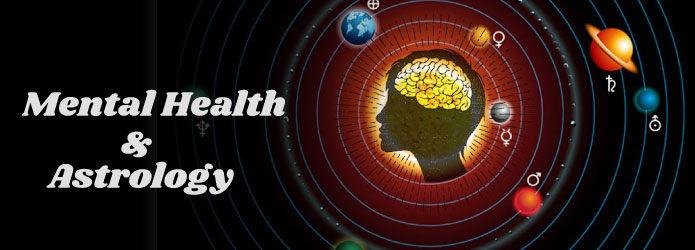
The Hermit card is the ninth card in the Major Arcana of the tarot deck. It represents a deep journey into solitude, introspection, and the quest for inner wisdom. Unlike other cards in the tarot, which often emphasize external action and relationships, The Hermit invites us to turn inward and reflect on our true selves. This article will explore the symbolism of The Hermit card, its meanings in various contexts, its astrological associations, and how it can guide us on our journey toward self-discovery and enlightenment.
Before diving into the specifics of The Hermit card, it's essential to grasp the overall structure of the tarot:
Major Arcana: Comprising 22 cards, the Major Arcana reflects significant life lessons, spiritual themes, and archetypal experiences. Each card represents a crucial aspect of our journey through life.
Minor Arcana: This consists of 56 cards divided into four suits (Cups, Pentacles, Swords, and Wands) that explore everyday experiences and challenges.
The Hermit occupies a pivotal position in the Major Arcana, signifying a transitional phase in one’s spiritual journey.
The Hermit card is rich in symbolism, with each element contributing to a deeper understanding of its meanings.
1. The Hermit Figure
At the center of the card is an elderly figure, often depicted as a wise man with a long beard. His age symbolizes wisdom, experience, and the accumulation of knowledge over time. This figure represents the seeker of truth, someone who has ventured far in their journey and now seeks deeper understanding.
2. The Lantern
The Hermit carries a lantern, which symbolizes guidance, illumination, and the search for truth. The light emanating from the lantern represents the inner wisdom that the Hermit has cultivated, suggesting that true enlightenment comes from within. It also signifies the need to seek clarity and insight in times of darkness or confusion.
3. The Mountain
The Hermit is often depicted standing on a mountain or a high peak, symbolizing the journey of ascension and the pursuit of higher understanding. The mountain represents the challenges one must overcome to attain wisdom and enlightenment. It serves as a metaphor for the obstacles that individuals face on their spiritual journey.
4. The Cloak
The Hermit wears a cloak, symbolizing protection and the sacredness of his journey. The cloak represents the desire for solitude and reflection, shielding the seeker from the distractions of the outside world. It also signifies the importance of introspection in the quest for knowledge.
5. The Color Palette
The colors used in The Hermit card often include muted tones, such as grays, browns, and dark blues. These colors evoke feelings of tranquility and contemplation, reinforcing the card's themes of introspection and inner exploration.
The Hermit card encompasses a variety of meanings, primarily centered on introspection, solitude, and the search for inner wisdom. Let’s explore its core themes:
1. Introspection and Self-Discovery
At its essence, The Hermit card signifies a time of introspection and self-discovery. It encourages individuals to take a step back from the chaos of daily life and reflect on their true selves. This card emphasizes the importance of understanding one's thoughts, feelings, and desires before making significant life decisions.
2. Solitude and Retreat
The Hermit card often indicates a need for solitude and retreat. It suggests that individuals may benefit from withdrawing from social engagements and distractions to connect with their inner selves. This card encourages the exploration of one's thoughts and emotions in a peaceful and quiet environment.
3. Seeking Guidance and Wisdom
The Hermit embodies the pursuit of knowledge and wisdom. This card encourages individuals to seek guidance from within, as well as from trusted mentors or spiritual leaders. The Hermit suggests that true enlightenment comes from a combination of self-reflection and external learning.
4. Spiritual Awakening
The Hermit card is often associated with spiritual awakening and enlightenment. It signifies a period of profound inner transformation, where individuals are invited to explore their spiritual beliefs and seek a deeper understanding of their life purpose. This card encourages individuals to embrace their spiritual journey, no matter how challenging it may be.
5. Patience and Reflection
The Hermit card teaches the value of patience and reflection. It encourages individuals to take their time in their search for knowledge and understanding. Rushing into decisions or actions without careful consideration may lead to confusion and regret. This card serves as a reminder that personal growth often requires time and patience.
In tarot readings, the position of The Hermit card can significantly influence its interpretation. Let’s explore what it means when The Hermit card appears in various positions:
1. Past Position
When The Hermit card appears in the past position, it often signifies a time when the querent underwent a period of introspection or self-discovery. This card suggests that past experiences have shaped the querent's current beliefs and values. Reflecting on these experiences can provide valuable insights into their present situation.
2. Present Position
In the present position, The Hermit card indicates that the querent is currently in a phase of introspection and self-exploration. This card encourages individuals to take time for themselves and seek clarity in their thoughts and emotions. It may also signify the need for solitude to gain perspective on a particular issue or challenge.
3. Future Position
When The Hermit card appears in the future position, it suggests that the querent will enter a phase of introspection or spiritual awakening. This card indicates that the individual may need to retreat from the chaos of life to seek inner wisdom. It serves as a reminder to trust in their journey and embrace the lessons that will arise during this time.
When The Hermit card appears reversed in a reading, it signals themes of isolation, loneliness, and disconnection.
1. Feelings of Isolation
A reversed Hermit card often indicates feelings of isolation or loneliness. The querent may feel cut off from others or struggle to connect with those around them. This card serves as a reminder to seek social connections and reach out for support during challenging times.
2. Avoidance of Introspection
The reversed Hermit card can also suggest a reluctance to engage in self-reflection or introspection. The querent may be avoiding the deeper questions about their life or emotions, leading to confusion or stagnation. This card encourages individuals to confront their feelings and seek clarity within themselves.
3. Lack of Direction
When The Hermit card appears reversed, it may signify a lack of direction or purpose. The querent might feel lost or unsure about their path in life. This card serves as a reminder to take the time to evaluate one's goals and aspirations and to seek guidance from within.
4. Overindulgence in Solitude
A reversed Hermit card can also indicate an overindulgence in solitude, leading to withdrawal from the world. The querent may be spending too much time alone, neglecting social interactions and relationships. This card encourages individuals to find a balance between solitude and connection with others.
The Hermit card is closely linked to the astrological sign of Virgo, symbolizing intellect, analysis, and a desire for purity and perfection.
Virgo: The Sign of Introspection and Service
Virgo, ruled by Mercury, embodies qualities of analytical thinking, practicality, and attention to detail. The association with Virgo reinforces The Hermit card's themes of introspection and the pursuit of knowledge. Just as Virgo seeks to refine and improve, The Hermit encourages individuals to explore their inner selves and strive for personal growth.
The Hermit card offers valuable guidance on how to incorporate its principles of introspection and self-discovery into daily life:
1. Embrace Solitude
The Hermit card serves as a reminder to embrace solitude and take time for introspection. Engaging in quiet activities such as meditation, journaling, or nature walks can provide the space needed for self-reflection and personal growth.
2. Seek Inner Wisdom
The Hermit encourages individuals to seek inner wisdom and trust their intuition. Engaging in practices such as mindfulness, yoga, or spiritual exploration can help individuals connect with their inner selves and gain clarity on their life path.
3. Foster Self-Reflection
Making self-reflection a regular practice can enhance personal growth. Setting aside time to evaluate one’s thoughts, emotions, and life choices allows individuals to gain insight into their values and beliefs.
4. Connect with Nature
Spending time in nature can facilitate introspection and healing. Nature offers a serene environment for contemplation, providing individuals with the opportunity to connect with their surroundings and reflect on their journey.
5. Find a Mentor or Guide
The Hermit card encourages individuals to seek guidance from mentors, teachers, or spiritual leaders. Learning from those with experience can provide valuable insights and support on one’s path to self-discovery.
The Hermit tarot card represents the profound journey of self-discovery, introspection, and the search for inner wisdom. Its themes of solitude, patience, and spiritual awakening resonate deeply with the human experience. Whether in the context of personal challenges, relationships, or spiritual growth, The Hermit serves as a powerful reminder that true enlightenment comes from within.

Many festivals are celebrated in India and Shardiya Navratri festival has a great historical background....

The mind is represented by moon, its placement, condition and afflictions in the birth chart. ...

Sawan Shivratri 2022 - Holy month of Sawan is going on. This month, Shivaratri is considered special....

Tirupati Balaji Temple is one of the richest temples located in Andhra Pradesh....